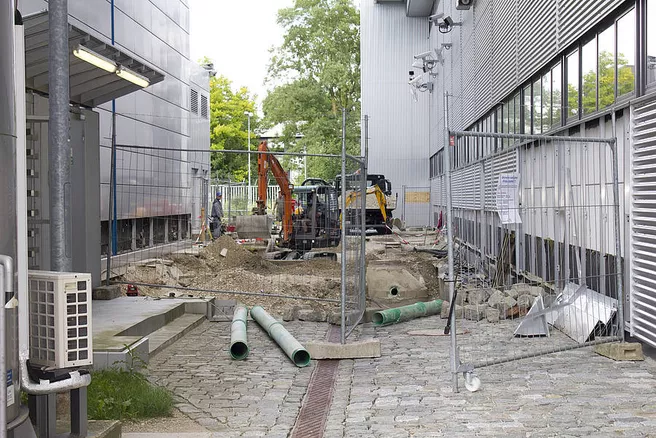The neutrons from the experimental hall will be conducted to the new neutron guide hall through the connecting building, which hast to be built in the next step. "The neutron guide hall east will provide additional worldwide unique experimental opportunities that will attract even more scientific users", says Professor Dr. Winfried Petry, the Scientific Director of the Research Neutron Source Heinz Maier-Leibnitz (FRM II).
The neutron guide hall east will house the following seven scientific instruments:
- The instrument for measuring the dipole moment of the neutron (in the framework of the currently extended Excellence Cluster Universe at the TUM), which is intended to clarify the imbalance between matter and antimatter in the universe.
- The time of flight spectrometer TOPAS (operated by Forschungszentrum Jülich), where magnetic interactions are studied that are important for future applications in information technologies.
- The powder and texture diffractometer Powtex (Forschungszentrum Jülich), which aims to promote the development of advanced materials and to elucidate their molecular structure.
- The high-pressure press (University of Bayreuth), which allows for the examination of geophysical problems under conditions that prevail deep in the Earth's interior.
- The three-axes- spectrometer TRISP (Max-Planck Society), with which the phenomenon of superconductivity is to be further explored.
- The positron source NEPOMUC (TUM and University of the Bundeswehr Munich), with the world's most intense source of slow positrons, among other things, fusion plasmas for future electricity generation can be simulated.
- The experiment PERC (DFG Schwerpunktprogramm 1491) for high precision measurements of the decay of the neutron using cold neutrons. The scientists hereby want to verify the standard model for the unification of the fundamental physical forces.
